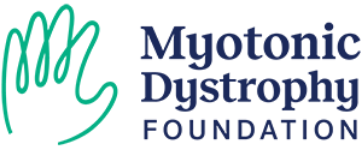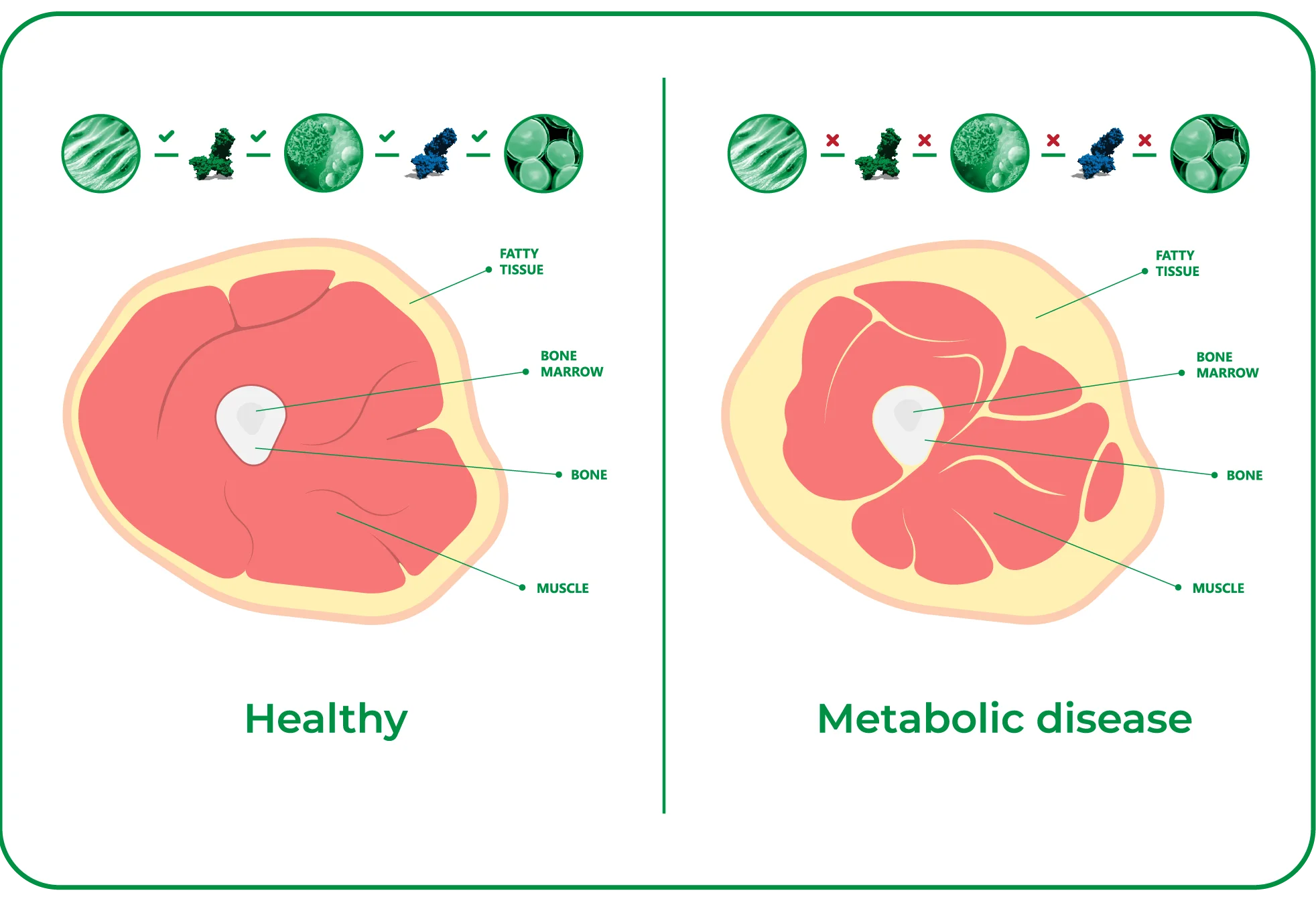Myopathies and metabolic diseases can result from a breakdown within the complex intercellular protein signaling pathways in the body. Until now, the available tools for mapping this biology limited the development of regenerative therapies and a significant unmet need exists. Juvena targets the dysregulation of proteins by engineering novel biologics to restore tissue homeostasis.
As one of the most recognized and debilitating forms of myopathy, muscular dystrophies are characterized by progressive weakening and wasting away of muscular tissues. These diseases are caused by defective genes that disrupt the creation of vital proteins necessary for sustaining healthy musculature.
Myotonic dystrophy is caused by a genetic mutation that results in protein dysregulation and impairment of muscle groups responsible for mobility, cardiac function, respiration, digestion, vision, and cognition.
1:2100
individuals affected, an estimated 3.6 million worldwide
50%
chance of passing mutated gene to offspring
#1
most common adult form of muscular dystrophy
*Statistics sourced from the Myotonic Dystrophy Foundation. To learn more about the Myotonic Dystrophy Foundation, visit myotonic.org
There are no approved muscle regeneration therapies for myotonic dystrophy, despite a significant unmet need. We combined our diverse library of stem-cell secreted proteins with our AI-enabled JuvNet platform to discover and translate our pipeline of biologic candidates. Our lead program, JUV-161 is a therapeutic protein that has demonstrated the ability to restore muscle differentiation, promote survival, increase strength, and improve metabolism by restoring protein signaling mechanisms that are crucial for muscular and metabolic homeostasis.
Juvena works together with the Myotonic Dystrophy Foundation to translate our research into tangible clinical benefits for people living with DM1. This collaboration synergizes Juvena’s scientific innovations with the Foundation’s extensive roots in the Myotonic dystrophy community to enable profound real-world impact. Our shared objectives center on the rapid progression of novel therapeutics from the laboratory to patient point-of-care.
Juvena works together with the Myotonic Dystrophy Foundation to translate our research into tangible clinical benefits for people living with DM1. This collaboration synergizes Juvena’s scientific innovations with the Foundation’s extensive roots in the Myotonic dystrophy community to enable profound real-world impact. Our shared objectives center on the rapid progression of novel therapeutics from the laboratory to patient point-of-care.

“We are excited about the unique approach Juvena Therapeutics is advancing to treat DM1 because of its potential to safely promote muscle regeneration, improve metabolism and rejuvenate lives,” said Dr. Tanya Stevenson, CEO of the Myotonic Dystrophy Foundation.
Metabolic disorders can arise when defective protein signaling between cells disrupts the normal metabolic processes that support tissue health. Dysfunction in these critical signaling cascades challenges the body to maintain homeostasis and leads to damage in metabolic tissues like skeletal muscle, bone, and fat tissues. Juvena is leveraging the power of secreted proteins to address common diseases such obesity and muscle degeneration.
142 million
people in the U.S. projected to be obese by 2030*
32 million
people in the U.S. that may suffer from sarcopenia in 2030, including many obese patients**
0
approved drugs to treat sarcopenia
*Calculation based on CDC prevalence data and 2030 population projections
**Calculation sourced using Evaluate
Many metabolic diseases affect the fat tissue and often result in obesity. Already posing a major public health concern in the United States, the incidence of obesity is anticipated to sharply increase.
Sarcopenia is the progressive loss of skeletal muscle mass and strength leading to physical disability, poor quality of life, and death. Risk factors for sarcopenia include aging, decreased physical activity, and metabolic disorders such as obesity.

Our JuvNET platform has identified and led to the translation of multiple stem-cell secreted proteins that act on the metabolic axis. Preclinical efficacy in metabolic disease models demonstrate improvement in energy regulation, tissue repair, weight loss, and muscle function. By targeting mechanisms underlying metabolic homeostasis, Juvena is developing a promising therapeutic approach for obesity and its related comorbidity, sarcopenia.

© 2023 Juvena Therapeutics Inc. All Rights Reserved | Privacy Policy